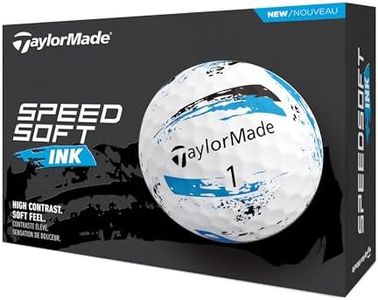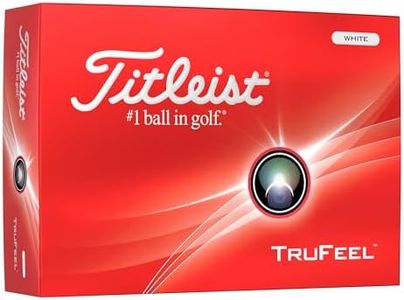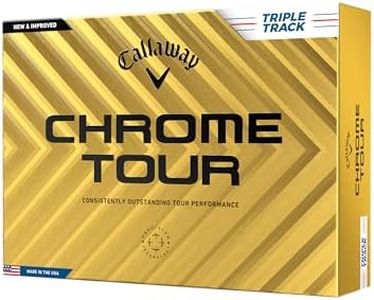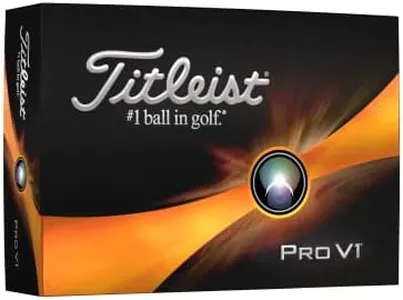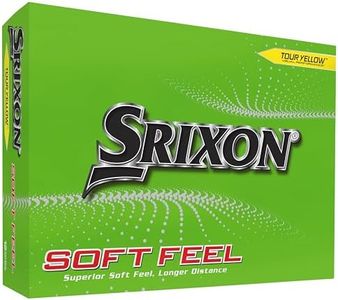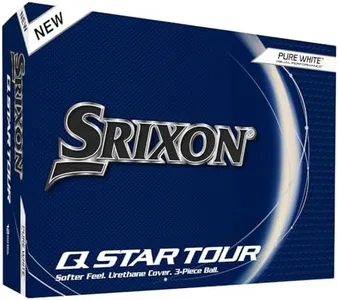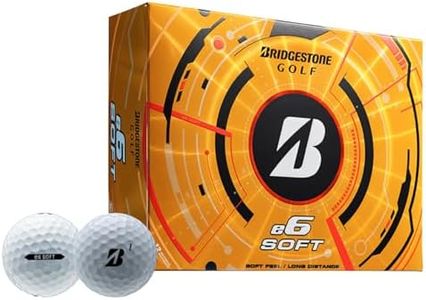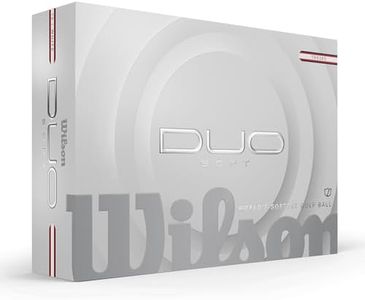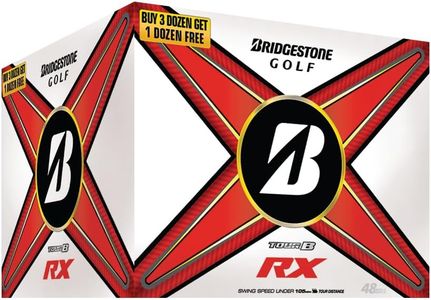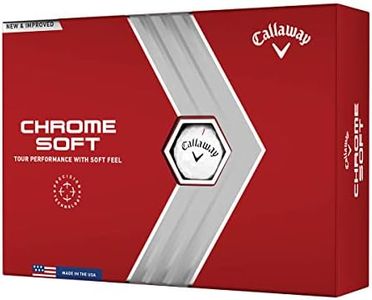We Use CookiesWe use cookies to enhance the security, performance,
functionality and for analytical and promotional activities. By continuing to browse this site you
are agreeing to our privacy policy
10 Best Golf Balls For Seniors
From leading brands and best sellers available on the web.Buying Guide for the Best Golf Balls For Seniors
Choosing the right golf ball can make a big difference in your game, especially as a senior. As you age, your swing speed, strength, and technique may change, so it's wise to pick a ball that complements those shifts. The best golf ball for you will help you get more distance, maintain accuracy, and feel comfortable every time you play. Understanding how different features of golf balls impact performance will guide you towards a choice that enhances your play and enjoyment on the course.CompressionCompression refers to how much the ball compresses when it is struck. Lower compression balls are softer and require less force to create distance, making them easier to use for those with slower swing speeds, which is common among seniors. Golf balls typically range from low (under 70), medium (70-90), to high (above 90) compression. If you have a slower or moderate swing, a low to medium compression ball can help you get better distance and a softer feel. Higher compression balls are generally better for faster swings, which may not suit most seniors. Think about your swing speed and choose a compression that matches; if in doubt, softer is often better for comfort and distance as you age.
Cover MaterialThe cover material of a golf ball affects its feel, durability, and control. The two main types are Surlyn and Urethane. Surlyn covers are tougher and provide more distance with less spin, making them a great choice for those who want a durable, straightforward ball. Urethane covers offer a softer feel and more spin control, which can help with short game and putting but tend to wear out faster. For seniors, Surlyn is usually recommended for extra resilience, but if you prioritize feel and spin around the green, consider Urethane.
Spin RateSpin rate determines how much the ball spins in the air and on the ground. Lower spin balls tend to fly straighter and go further, which can be useful if you struggle with slicing or hooking the ball. Mid spin balls balance distance and control, while higher spin balls offer the most control for short shots and approaches but may exaggerate sidespin errors. Seniors who want more distance and straighter shots should look for low to mid spin options, while those who value control on the greens may prefer a higher spin ball.
VisibilityVisibility refers to how easy it is to spot the ball in different conditions. Many golf balls come in bright colors or have special finishes to make them easier to see in grass, sand, or cloudy conditions. If you find it hard to track white balls or lose them easily, a high-visibility color like yellow or orange can help you enjoy your game without frustration.
Number of Layers (Pieces)The number of layers, or pieces, in a ball affects how it performs. Two-piece balls are simpler, providing durability and maximum distance, and are ideal for those with slower swings or who mainly want straightforward performance. Three-piece and multi-piece balls add extra layers for more control, feel, and spin, which can help with specific shot-making but require a bit more swing speed to fully benefit. For most seniors, two or three-piece balls offer the best balance of performance and ease of use.
FeelFeel is how soft or firm the ball feels when you hit it, and this can affect both your confidence and performance. A softer-feeling ball tends to compress more and feels more comfortable, especially on shorter shots and putts. Firmer balls might offer a bit more feedback and distance but can feel harder on the hands. Seniors often opt for softer balls as they are gentler on the joints and provide a pleasant response with every club.

